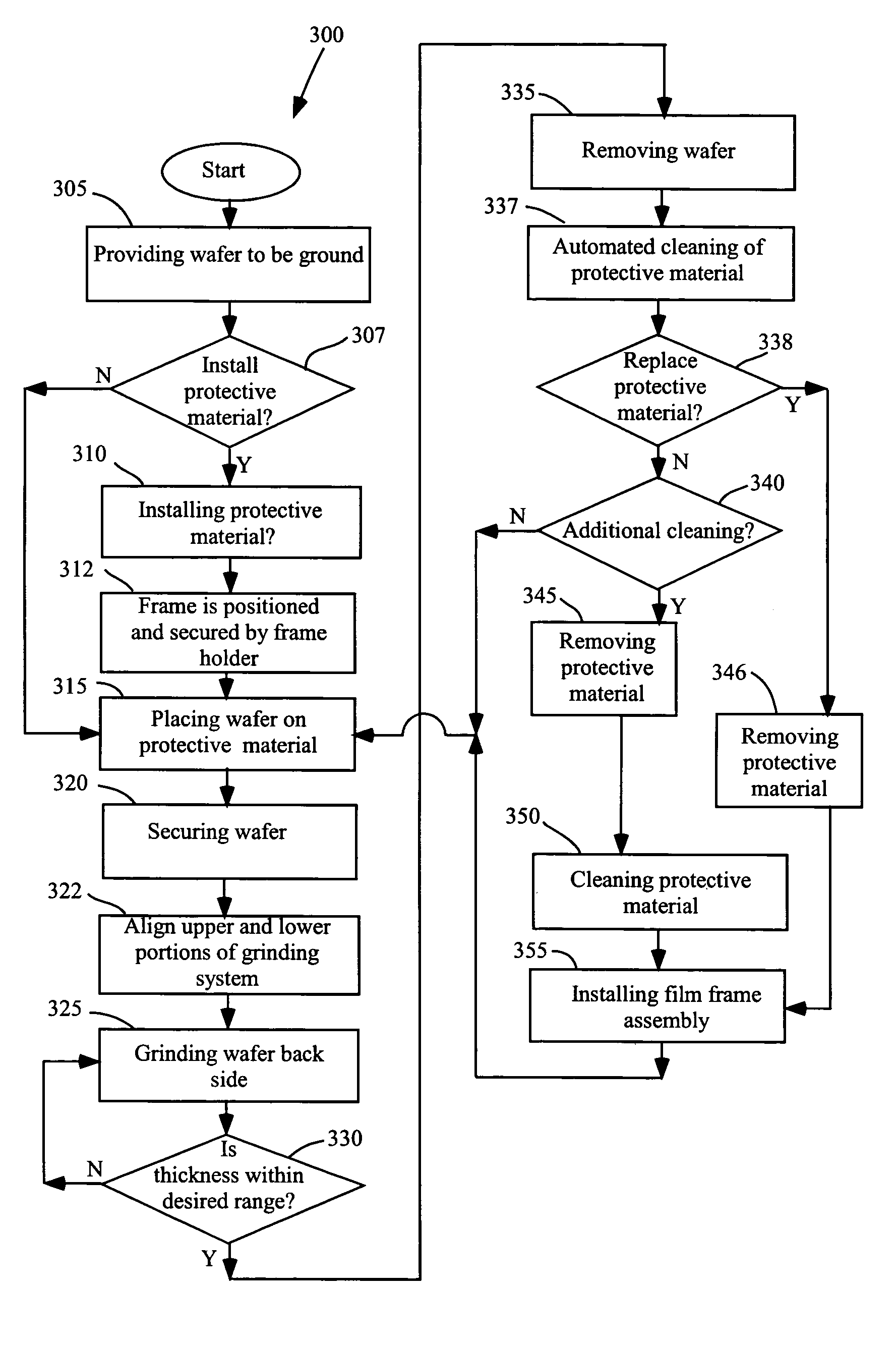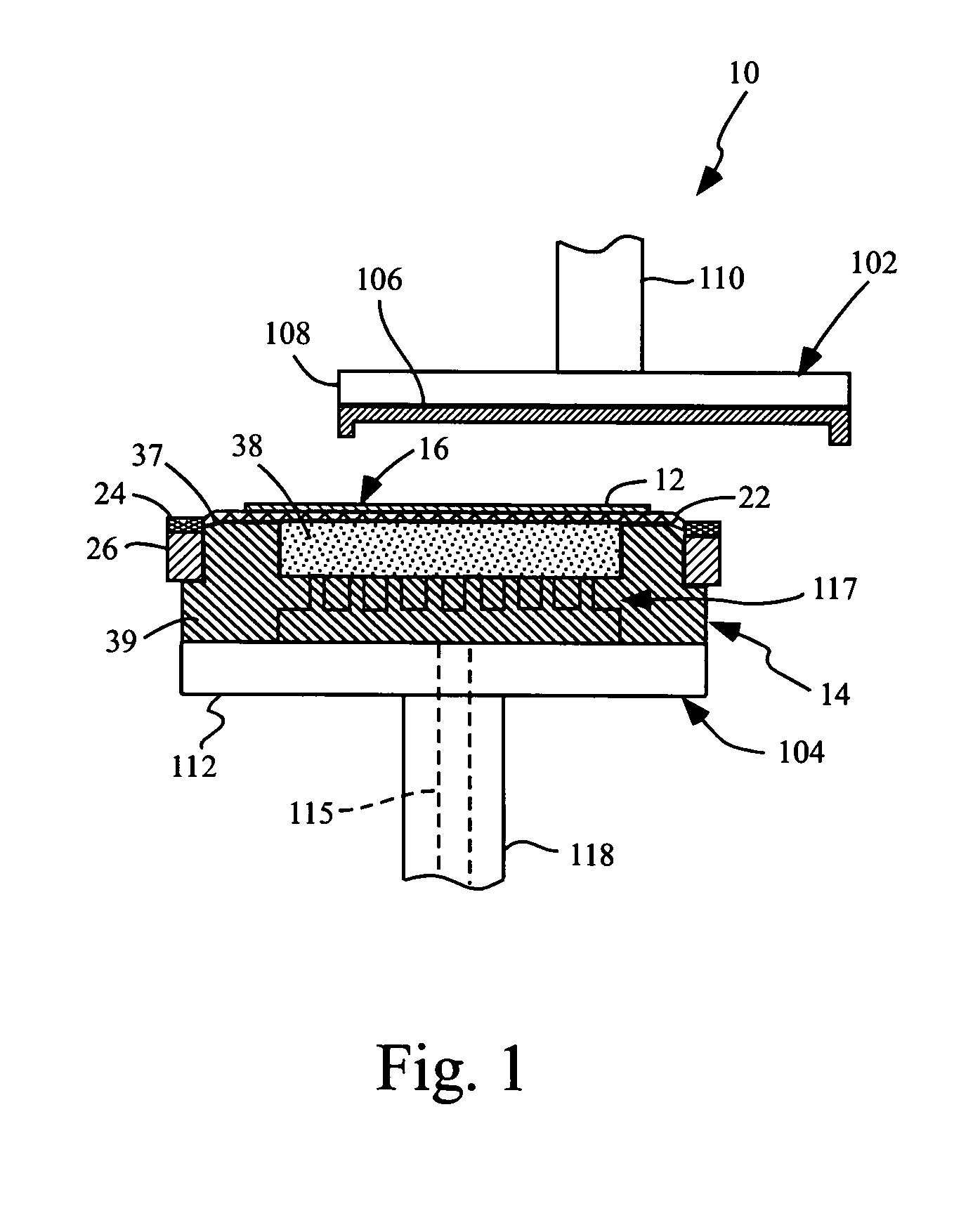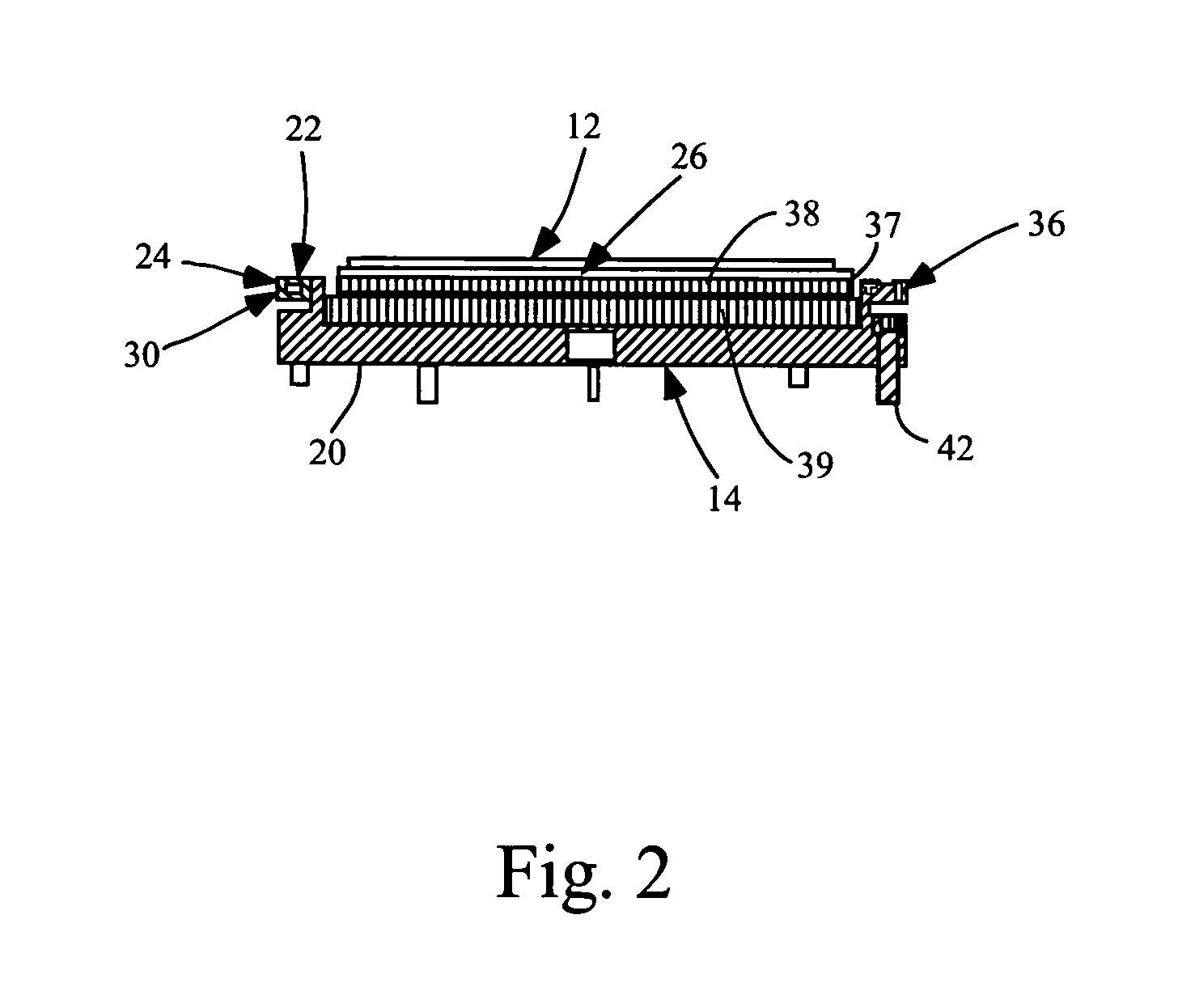Protection of work piece during surface processing
a work piece and surface processing technology, applied in the direction of grinding drives, grinding machine components, manufacturing tools, etc., can solve the problems of higher failure rate of wafers, and cracking of wafers, so as to facilitate use, improve grinding and similar operations, and reduce wafer thickness
- Summary
- Abstract
- Description
- Claims
- Application Information
AI Technical Summary
Benefits of technology
Problems solved by technology
Method used
Image
Examples
Embodiment Construction
[0021]As will be seen herein, the present embodiment offers substantial improvements in the field of semiconductor grinding or polishing on either the front or backside of a wafer being processed. The present embodiment has found immediate commercial application in the field of wafer thinning, which is typically carried out on the backside of the wafer. The present embodiment provides a number of important advantages by at least in part eliminating the need for taping and de-taping procedures, including increased production speeds, increased end product throughput, reduced costs, as well as other advantages and enhancements.
[0022]In previous grinding systems, wafer taping procedures utilizing protective tape can achieve minimum wafer thicknesses down to about 180 microns with a total thickness variation (TTV) of 4 to 5 microns. The present embodiment also eliminates the need for coating a front wafer surface with a spun photo resist. With the present embodiment, minimum wafer thickn...
PUM
| Property | Measurement | Unit |
|---|---|---|
| thickness | aaaaa | aaaaa |
| Thickness | aaaaa | aaaaa |
| Thickness | aaaaa | aaaaa |
Abstract
Description
Claims
Application Information
 Login to View More
Login to View More - R&D
- Intellectual Property
- Life Sciences
- Materials
- Tech Scout
- Unparalleled Data Quality
- Higher Quality Content
- 60% Fewer Hallucinations
Browse by: Latest US Patents, China's latest patents, Technical Efficacy Thesaurus, Application Domain, Technology Topic, Popular Technical Reports.
© 2025 PatSnap. All rights reserved.Legal|Privacy policy|Modern Slavery Act Transparency Statement|Sitemap|About US| Contact US: help@patsnap.com



